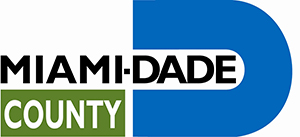See Tracks, Think Train: City Unveils Railway Safety Campaign

SEE TRACKS, THINK TRAIN: CITY OF WEST PALM BEACH UNVEILS RAILWAY SAFETY CAMPAIGN
|
|
|
WEST PALM BEACH, FLORIDA (December 7, 2022) – Mayor Keith A. James and the City of West Palm Beach have unveiled a railway safety campaign to encourage and empower the public to make good choices at highway-rail grade crossings. Mayor James announced at a news conference on Wednesday, December 7, 2022, at 10 a.m., where he encouraged the public to ‘See Tracks, Think Train.’ The ‘See Tracks, Think Train’ campaign is designed to encourage pedestrians to look up both ways before crossing the railroad tracks, and to urge motorists and bicyclists to use caution.
To call attention to this message, the City is painting the ‘See Tracks, Think Train’ slogan, in black lettering within a bright orange diamond, at 47 West Palm Beach at grade railroad crossings in the City. Additionally, the City will share railway safety messages on its communications platforms, including social media, for the next week. Locations for the enhanced messaging include the following intersections:
- Fern Street and Quadrille Boulevard
- Clematis Street and Quadrille Boulevard
- Banyan Boulevard and Quadrille Boulevard
- Banyan Boulevard and Tamarind Avenue
In the U.S., a person or vehicle is hit by a train every three hours, according to federal statistics. 2,100 North Americans are injured or killed each year in these preventable incidents, according to the Operation Lifesaver organization. While the rail systems in the City are safe, deadly crashes or incidents occur.
“We care about the safety of the public on and around the private railway systems that are a part of the City of West Palm Beach’s mobility network,” said Mayor James. “The ‘See Tracks, Think Train’ campaign encourages the public to make good choices at rail crossings and on and around railways. Tragic incidents on railroad tracks and at crossings are entirely preventable. We want to reduce the number of deadly incidents involving trains to zero. Let’s work together to save lives.”
Rail safety organization Operation Lifesaver offers these track safety basics:
- Freight trains don’t travel at fixed times, and schedules for passenger trains often change. Always expect a train at each highway-rail intersection at any time.
- All train tracks are private property. Never walk on tracks; it’s illegal to trespass and highly dangerous. It takes the average freight train traveling at 55 mph more than a mile—the length of 18 football fields—to stop. Trains cannot stop quickly enough to avoid a collision.
- The average locomotive weighs about 400,000 pounds or 200 tons; it can weigh up to 6,000 tons. This makes the weight ratio of a car to a train proportional to that of a soda can to a car. We all know what happens to a soda can hit by a car.
- Trains have the right of way 100% of the time over emergency vehicles, cars, the police, and pedestrians.
- A train can extend three feet or more beyond the steel rail, putting the safety zone for pedestrians well beyond the three-foot mark. If there are rails on the railroad ties, always assume the track is in use, even if there are weeds or the track looks unused.
- Trains can move in either direction at any time. Sometimes its cars are pushed by locomotives instead of being pulled, which is especially true in commuter and light rail passenger service.
- Today’s trains are quieter than ever, producing no telltale “clackety-clack.” Any approaching train is always closer, moving faster than you think.
- Remember to cross train tracks ONLY at designated pedestrian or roadway crossings and obey all warning signs and signals posted there.
- Stay alert around railroad tracks. Refrain from texting, headphones, or other distractions that prevent you from hearing an approaching train; never mix rails and recreation.
- Source: Safety tips reprinted from Operation Lifesaver.
Did You Know?
- The City is served by five railroads. Amtrak, Brightline, and Tri-Rail provide railway passenger services. The FEC and CSX deliver freight throughout the City and state.
- The two railway corridors in West Palm Beach are the FEC/Brightline corridor and the CSX/Tri-Rail corridor. The corridors run parallel to one another, and each is approximately 8 miles long. The corridors are managed by the corporations—not the City—and are regulated by the U.S. Department of Transportation Federal Railroad Administration.
- There are 47 railway-grade crossings in West Palm Beach. These are intersections where a highway crosses a railroad at-grade. The City has made safety upgrades to many crossings. Working with our partners, we are looking for ways to make them even safer.
- Quiet Zones are in effect on SFRC/TriRail from Forest Hill Blvd. to 36th Street, and the other is on FEC/Brightline South from Gregory Road to 15th Street.In a quiet zone, railroads have been directed to cease the routine sounding of their horns when approaching public highway-rail grade crossings. Train horns may still be used in emergencies, when approaching or departing a station, or to comply with other Federal regulations or railroad operating rules. Quiet zones can be removed by Federal regulatory agencies following a high number of deadly crashes or incidents.
To learn more about railway safety, visit the Operation Lifesaver website.
###
Originally published at https://www.wpb.org/Home/Components/News/News/3119/772?npage=3
The post See Tracks, Think Train: City Unveils Railway Safety Campaign first appeared on Floridas News.


